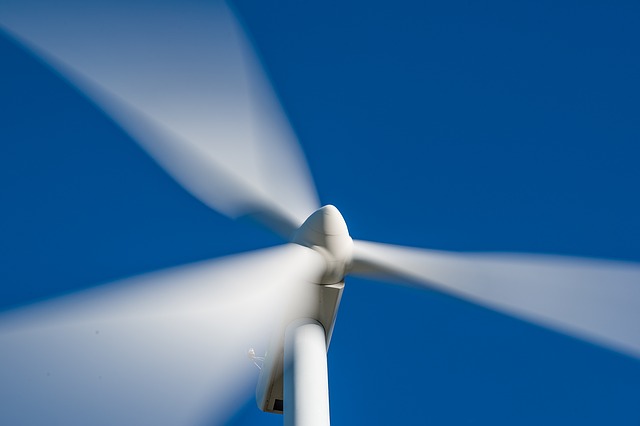
What is the Green New Deal?
Read a summary using the INOMICS AI tool
Although recently popularised in America, the Green New Deal (GND) was actually born during the early days of the 2007/8 financial crisis, in a small flat in London. The owner of the flat was analyst and foreseer of the crisis, Ann Pettifor; the occasion was a get-together of environmentalists and economists who had convened to draft a plan they hoped would both ‘transform the economy and protect the ecosystem’. Unfortunately for the London attendees, the prevailing political currents post crash proved especially hostile toward their idea, and prioritised, instead, principles of fiscal discipline and austerity, while largely sidelining issues of climate. And as long as such consensus reigned, the nascent GND was forced to lie dormant, far from political discourse.
This changed in 2018, in America, when the cause was reinvigorated by political upstart and now darling of the left, Alexandria Ocasio Cortez. Since sensationally winning New York’s 14th congressional district, Cortez has helped drag green policy, and the GND in particular, to the centre of the race for the Democrat Presidential nomination, gaining it international exposure. Meanwhile, weekly climate marches in many of the world’s major cities, the emergence of Greta Thunberg, and the action of groups like Extinction Rebellion have ensured the climate crisis now tops the news agenda everywhere.
Rid of the reputation that had it dismissed as outlandish and unfundable, the GND has surged in popularity, and according to a YouGov Blue poll, its core policies enjoy support from a majority of Americans. Despite this fandom, detractors remain and its future is far from guaranteed. Indeed, upcoming elections in the US and UK, both certain to be polarised, will likely be pivotal in deciding whether this once fledgling and radical idea, seeded in a cramped inner-city living room, ever comes to maturation.
What does it address?
Quite simply: climate change and inequality. The GND is underpinned by two fundamental and interconnected observations. The first is that the current economic system is failing: the pockets of corporate polluters and billionaires are lined, while working class families, communities of colour, and other minorities are exposed to stagnant wages, toxic pollution, and dead-end jobs. The second recognises that the climate crisis magnifies these systemic injustices. Hard-hit communities are typically hit hardest by storms, droughts, flooding etc., as entrenched inequality deprives them of the resources required to adapt, cope and, in some cases, live. It follows that climate change and inequality can only be addressed together. This is the GND’s starting point.
Through the mobilisation of vast public resources, the GND plans a transition from an economy built on fossil fuels and exploitation to one driven by clean energy and dignified work. Owing to its scale and widespread appropriation this has been articulated in various ways, with plans citing different costs and diverging deadlines. That said, at its core there remains a set of largely consistent aims which include: transferring 100% of the nation’s power generation to renewables; retrofitting all buildings to ensure they are energy efficient; decarbonising agriculture, transportation and manufacturing; and investing in drawdown technologies that extract carbon and other greenhouse gases from the air. Committed adoption of these goals would, in turn, make green technology, expertise, and services a major U.S. export, increasing GDP and allowing America to assume a leadership role in guiding other countries to carbon-neutral economies.
 Inequality and empowering workers
Inequality and empowering workers
The nature of the reforms, ubiquitous as they are, mean a diversity of jobs would be created everywhere. Presidential candidate Bernie Sanders’ proposed GND, which borrows heavily from Cortez’, estimates it would generate as many as 20 million ‘good paying, union jobs with strong benefits and safety standards’, many of which would be reserved for low-income families and communities of colour. With unemployment in the US standing at around 6 million, job creation of this magnitude would, in effect, serve as a de facto job guarantee for all those actively seeking work, realising, in the process, a staple-demand of the socialist movement. Such widespread opportunity would also empower the broader working class by defanging the threat of unemployment, the greatest barrier to organising for improved working conditions.
The effects of this could be huge, for the fear of perpetual unemployment has long-been the capitalist’s trump card, helping keep the scales tipped, forcibly, in his favour. It’s threat is so potent it routinely cows workers to accept wages too low to provide a decent standard of living, and has all but forbidden them to unionise - they simply have no recourse. The consequences are stark and worsening: 3.1 million Americans in full-time work now live below the poverty-line, and increasing numbers of children are growing up poor. A job guarantee would go some way to arrest this growing exploitation: it would naturally expand trade union rights, and strengthen, more generally, the position of the vulnerable worker.
Who is to pay?
The chief criticism of its still many detractors is the cost, the claim that it’s financially unfeasible. And it’s true, there’s no doubt it will be expensive. Its proponents, however, suggest that far from bankrupting the country, the ‘suite of economic reforms’, as at times it’s been called, would actually pay for itself - after 15 years if Sanders is to be believed. Although the exact economics of the project are predictably hazy, many remain confident that through a combination of higher taxes, reduced military spending, repealed fossil fuel subsidies, increased revenue from new energy, and income tax generated from millions of new jobs, it can yet be funded.
Vagaries aside, it’s clear the cost of inaction will be much, much higher. Every passing day serves as a reminder of why we need change on the scale of the Green New Deal. Every drought, hurricane, or flood, every story of a child going hungry, a parent enduring long-term unemployment, or a worker being exploited, adds to the growing evidence of its necessity. Inequality and climate change threaten not just our dignity but our existence, and continued inaction, which would likely be deadly, makes us all complicit. Yes, a Green New Deal is a huge undertaking and highly ambitious. But does that make it unworkable? Wars have previously mobilised countries on similar scales to that which is now required. Why not again? The mother of two-birds-one-stone solutions may well be in sight; it’s time we grabbed it.
-
- Senior Researcher / Group Leader Job
- Posted 1 week ago
Senior Research Associate (job market)
in United States
-
- Conference
- Posted 1 week ago
Nordic Econometric Meeting 2026
Between 1 Jun and 3 Jun in Helsinki, Finland
-
- Conference
- Posted 2 weeks ago
45th RSEP International Multidisciplinary Conference
Between 4 Feb and 5 Feb in Lisbon, Portugal














